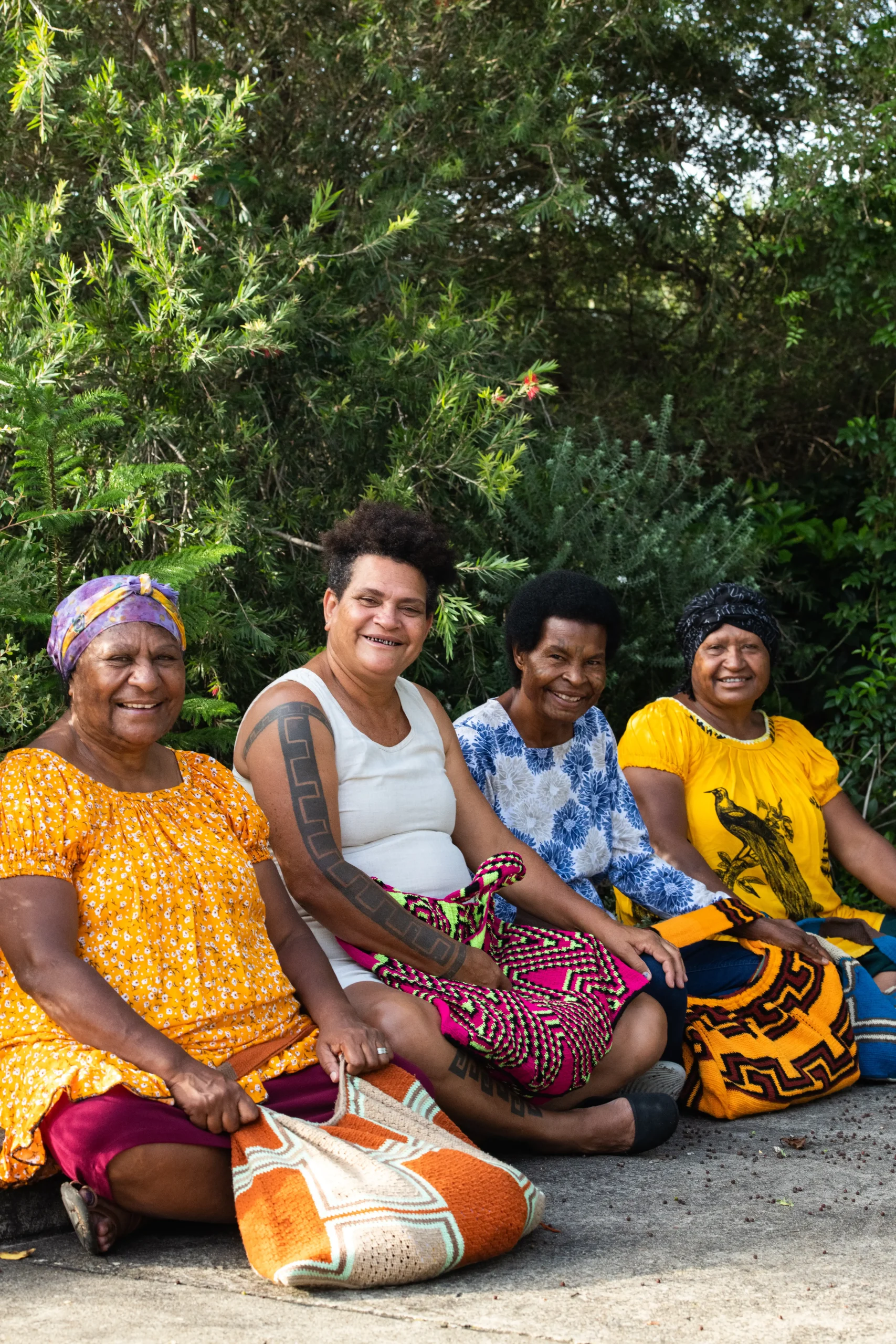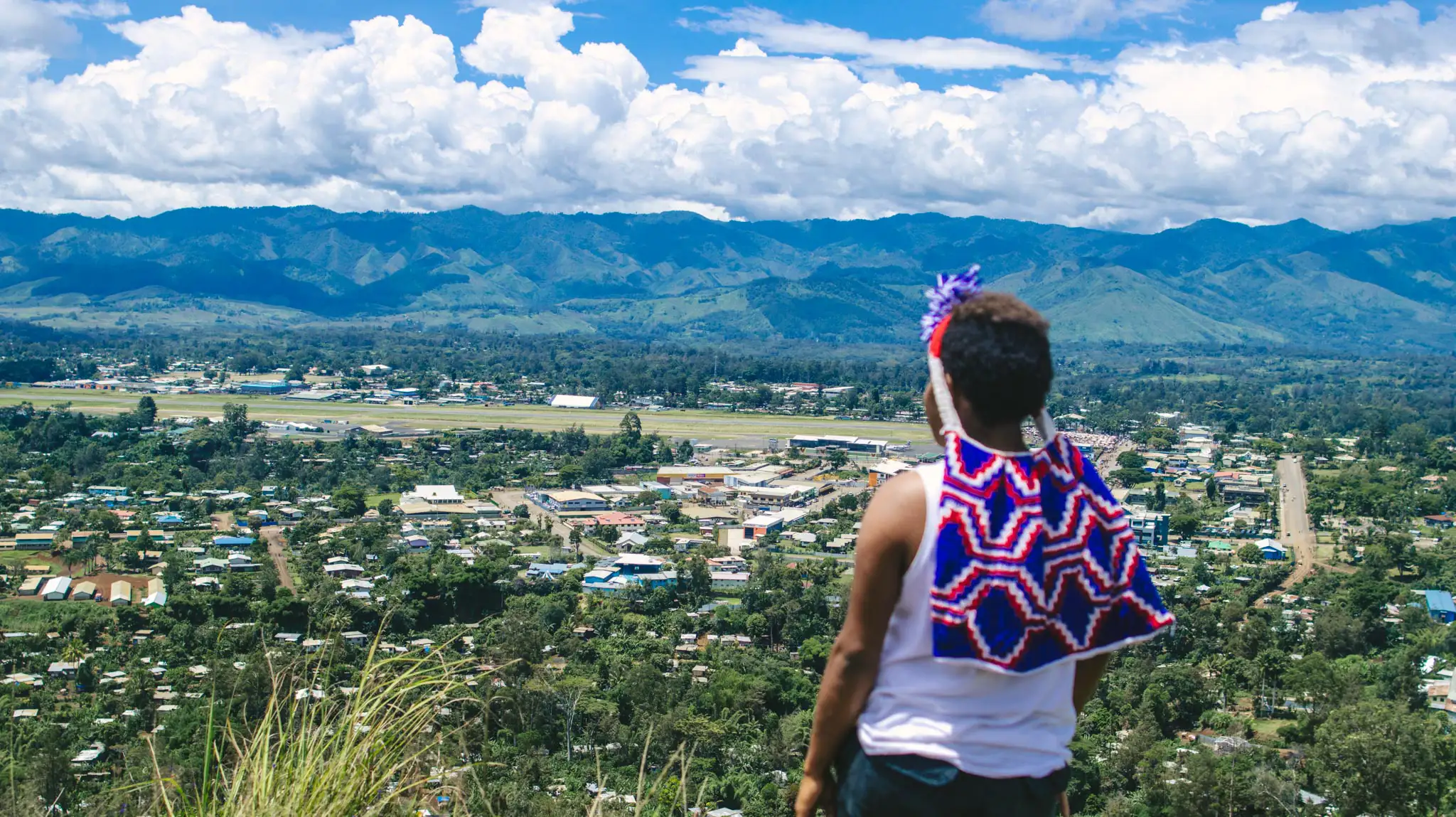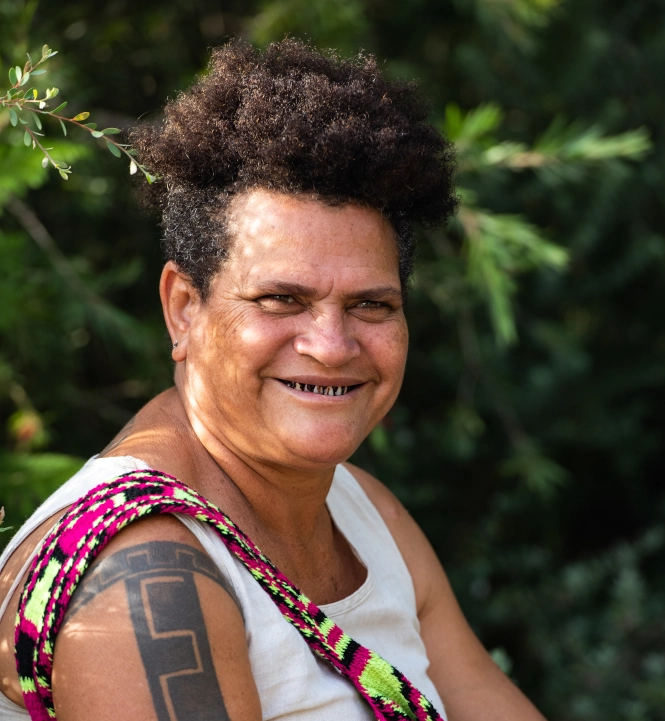
Florence Jaukae Kamel, known as “Bilum Meri,” has converted the ‘bilum’ – an attractively colored interwoven cloth bag with a variety of designs representing the histories of the Indigenous Peoples of Papua New Guinea – into a national symbol and internationally exported product. For the past 15 years, Florence has organized the annual Goroka Bilum Festival with more than 2,000 bilums every year made by a network of 3,000 Indigenous Women throughout the country. During the week-long festival, 100 female artisans present their most traditional bilums to the most innovative ones to thousands of people comprised of locals, tourists, and international buyers. Nowadays, while this cloth bag can be found in the markets and museums of Sydney, London, Bangkok, and New York, Goroka continues to be the cradle of the bilum.
Bilum
refers to a woman’s uterus, that sacred space that keeps a baby safe during pregnancy. As a handbag, it has the same purpose: to keep things safe.
In the Tok Pidgin language – one of the most-used of the 1,000 languages that exist in Papua New Guinea –

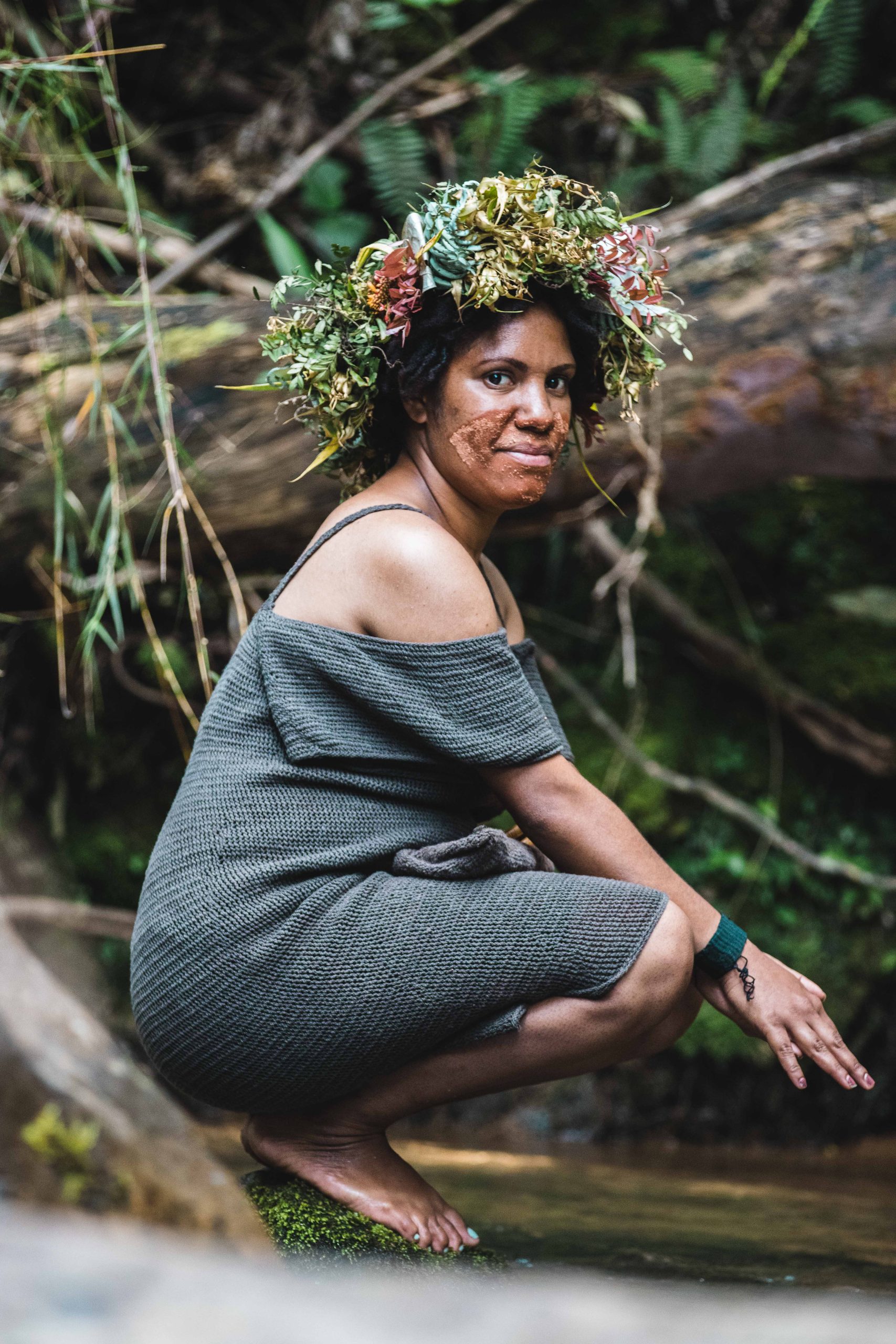
For thousands of years, the bilum has been a handbag used by the Indigenous Women of Papua New Guinea to carry their purchases, personal items, and even their babies. In the Tok Pidgin language – one of the most-used of the 1,000 languages that exist in Papua New Guinea – ‘bilum’ refers to a woman’s uterus, that sacred space that keeps a baby safe during pregnancy. As a handbag, it has the same purpose: to keep things safe.

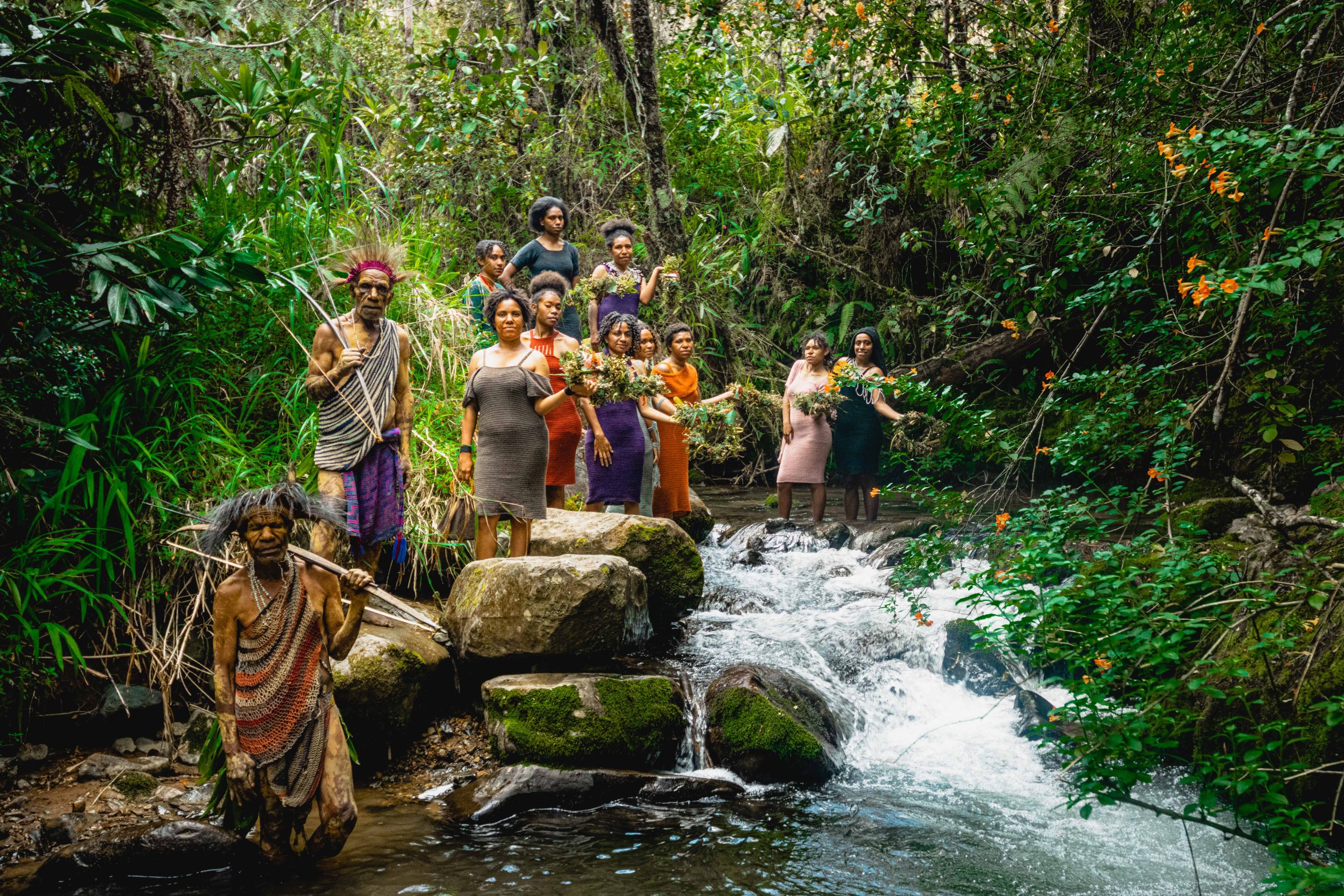
Florence was the first woman to use the cloth and designs of the bilum as an article of clothing. In 2002, she created her first earth-colored dress inspired by the skin of the copperhead snake. This soon became an important trend in the region, even promoting a national debate amongst those in favor and against the initiative. That gave rise to her nickname “Bilum Meri,” and in 2002 she was the first woman elected municipal councilor of Goroka, the capital of the Eastern Highlands Province, representing the Kama Nagamiufa clan of the Alekano-language ethnic group. As a municipal councilor, one of her first projects was to obtain funding to enable Indigenous Women to purchase cloth thread to make bilums. Florence also fostered connections with local and international buyers to expand the sales market, which at that time was very limited.
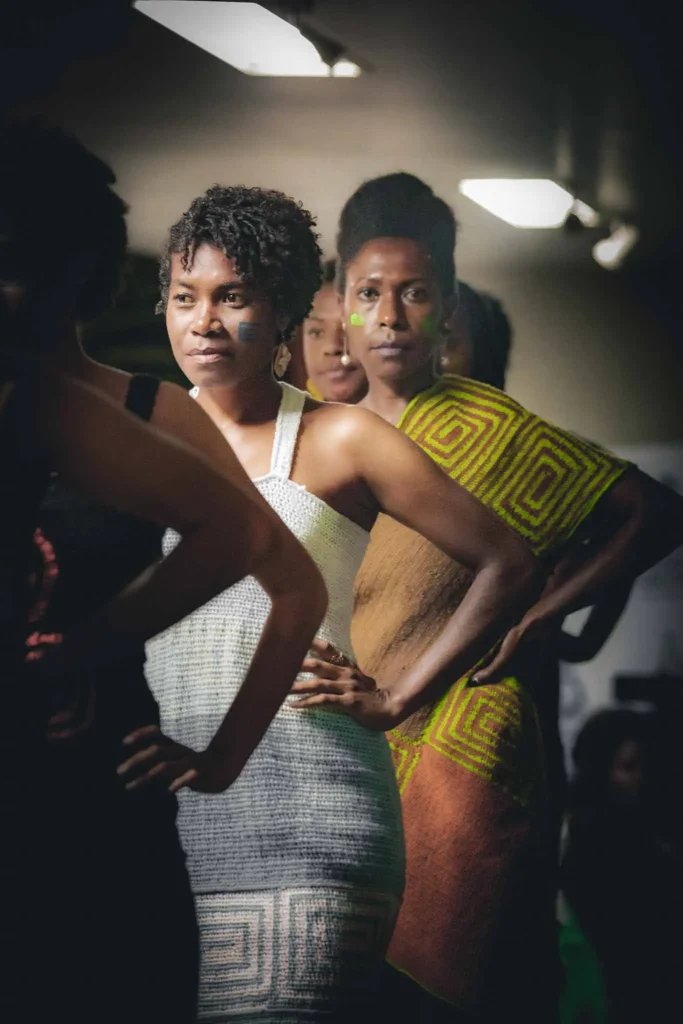
However, Florence was also buffeted by storms due to being recognized for her work. Her husband could not tolerate the fact that she had become more successful than him, and every time he drank she ended up with bruises all over her body. In 2007, Florence decided to leave her husband and, with her five sons and daughters in tow, left her home with eight ‘kinars’ in her pocket (approximately US$2).
When she took money out of her pocket to buy food for her small daughter, she realized she still had Ruth Choulai’s contact card, who at that time was the creative agent for Pacific Trade Invest (PTI), an agency that promotes investment and commerce in the Pacific region and is supported by the governments of Australia, New Zealand, and China. With the money she had left after buying food, she went to a cybercafé and sent an email to Ruth inviting her to what would become the first bilum festival. Florence quickly found a municipal representative to support her financially and brought together the Indigenous Women with whom she had worked to organize the festival. Thus was born the Goroka Bilum Festival. The first one was held in 2009 and hundreds of Indigenous Women attended.

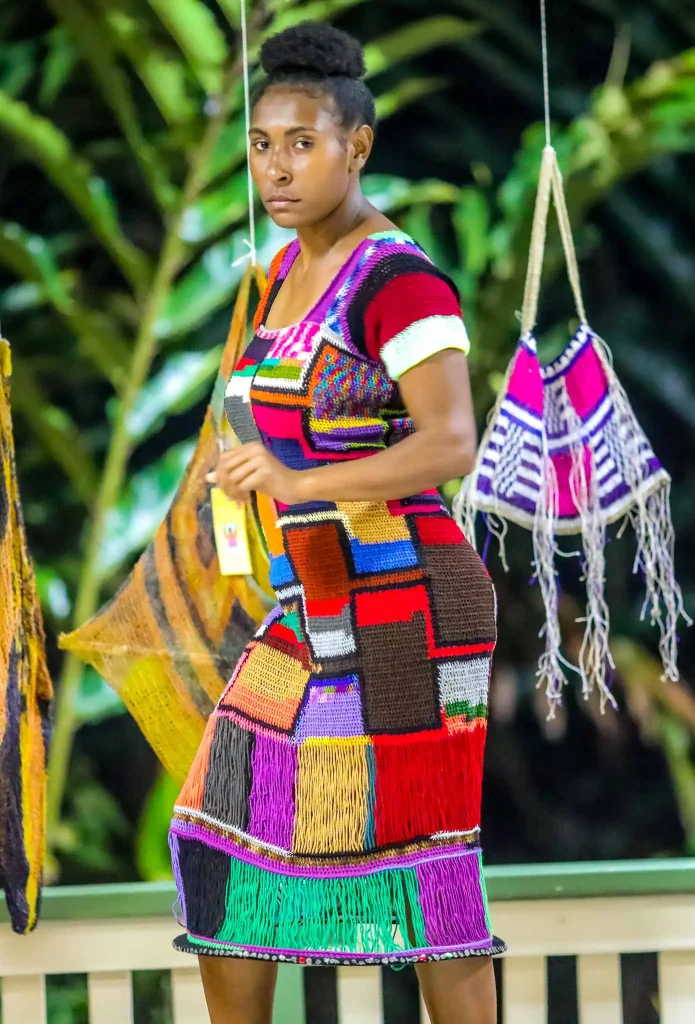
Preserving culture through the bilum
The Goroka Bilum Festival was created to offer a sales platform for Indigenous Women that would enable them to earn their own income. However, with the passage of the years, it has become so much more: a tool for empowerment and a way to preserve the culture and histories of the indigenous peoples of Papua New Guinea. The central element of the festival is the contest to choose the year’s best bilums in two categories: those made of natural fibers and those made of synthetic fibers, usually imported.
The Goroka Bilum Festival was created to offer a sales platform for Indigenous Women that would enable them to earn their own income. However, with the passage of the years, it has become so much more: a tool for empowerment and a way to preserve the culture and histories of the indigenous peoples of Papua New Guinea.
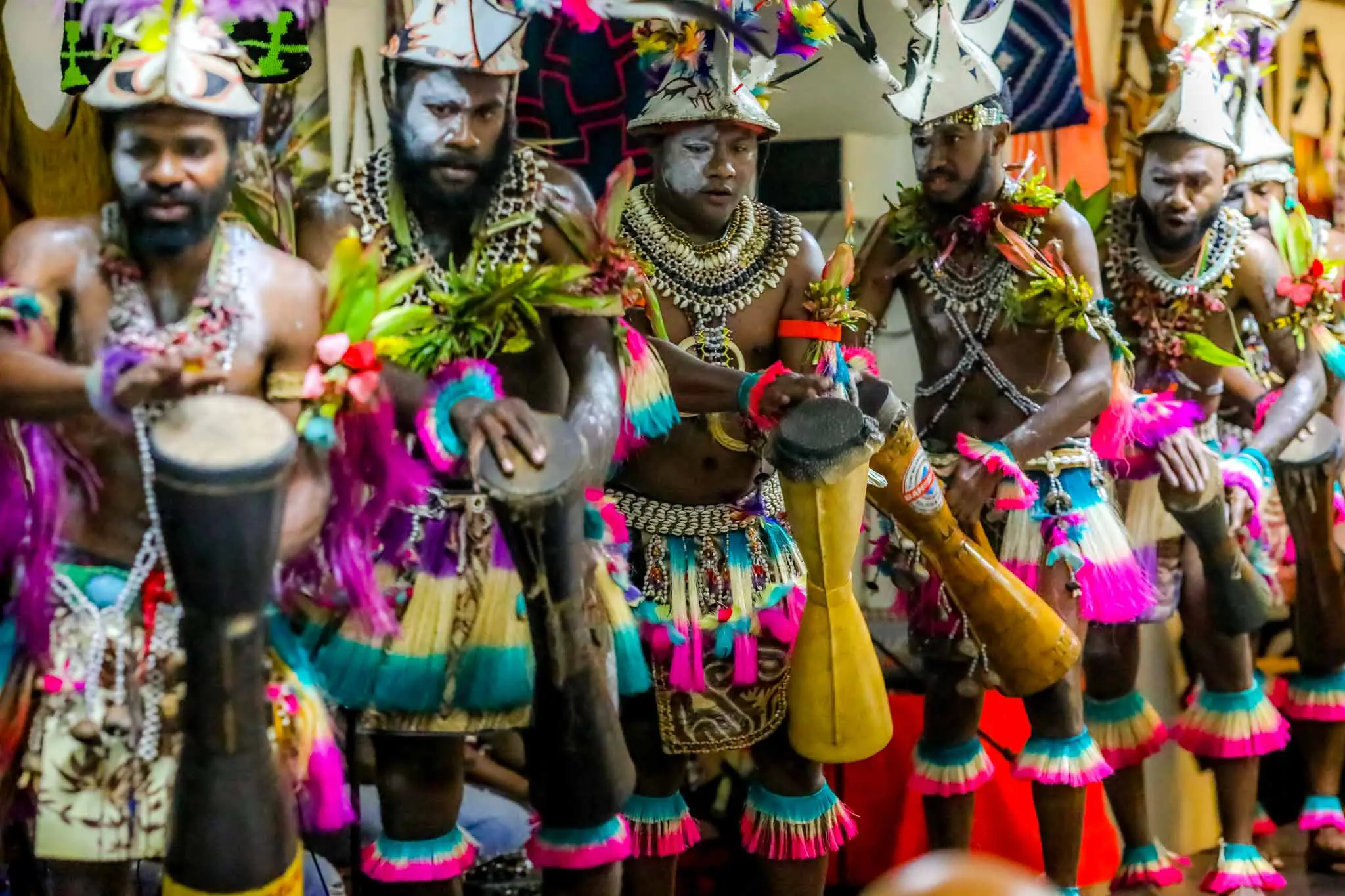
Traditionally, bilums are made out of natural fibers obtained from plants such as the paper mulberry, agave, or tulip, and the thread is dyed using extracts of leaves, seeds, and flowers. Bones or bamboo reeds used to be used for needles. However, due to the burgeoning urbanization, the plants from which the thread is obtained are disappearing and the women have to go ever farther distances to find them. This has led many of them to use acrylic thread, thread made from recycled fiber, or even synthetic thread, and to replace bones with umbrella rods.
During the contest, the Indigenous Women present their bilums in representation of their communities, and recount the histories behind each bag’s colors and designs. One of the most popular designs is that of the diamond, which represents Young Indigenous Women’s purity and virginity following puberty. In the past, young women took part in a ceremony in which they were shut away in their homes while their families sacrificed a pig and the women wove bilums. When the dazzling sun rose at daybreak, the young women would leave their homes with their bilums bearing diamond designs and were presented to the gods. Histories like this one are compiled during the festival to preserve the memories and traditions of each Indigenous Community, but above all in order to pass on to small children.

Each year, Florence invites the schools in the region to enable Indigenous Children to learn the weaving technique, where to find the plants from which the thread is obtained, and how to replant them. Thus, from grandmothers to mothers and from mothers to daughters, the tradition is kept alive. The compilation of histories also permits the establishment of collective copyrights for each Indigenous Community, as a way to ward off the production of artificial bilums and cheap copies made in China.
Florence has also taken this cultural compilation to museums around the world, with an eye to preserving indigenous peoples’ history. Another central event of the festival is the Bilum Fashion Runweek, a sample of 20 articles of clothing made with bilum cloth, colors, and designs crafted by Florence and other women designers. Florence’s collection can also be found in museums such as the National Museum of Australia in Sydney; Queensland Museum in Brisbane, Australia; Anthropology Museum in Vancouver, Canada; and Smithsonian Museum in New York, among others.

Florence has also taken this cultural collection to museums around the world to preserve the history of Indigenous Peoples. Another highlight of the festival is the Bilum Fashion Runweek, a showcase of twenty pieces of clothing made from the fabric, colors, and designs of bilums, which Florence creates together with other designers.
One of the principal struggles Florence has faced is expanding the market beyond the borders of Papua New Guinea. In 2015, the designer began collaborating with the Australian brand Among Equals, through which she has exported thousands of bilums around the world, while ensuring that Indigenous Women receive the earnings from them.
Hundreds of women have been able to pay for their daughters’ schooling – whose education is not prioritized by their families – and have been able to buy dresses and pay to build homes for themselves. In this way have they pulled themselves up as economically independent women in a society in which men own the land and are the ones who keep the money earned from coffee plantations, even though the women are the ones who do all the work during the harvest season.
A refuge for survivors
This patriarchal system generates significant levels of abuse and gender-based violence against women, the same history experienced by Florence. After overcoming her history of domestic violence, Florence tattooed her left arm with the design of square ornamental borders, representing pigskin and marginalized women. In her community’s traditional customs, the women who have separated from their husbands or have been widowed are called “pigskin.”

The name comes from the fact that every time there is a ceremony, a pig is sacrificed as a symbol of wealth and the meat is shared; however, marginalized women are only give the pig’s skin, even though they peeled the yams and gathered the plantain leaves and water with which to cook the pig.
Florence honors the women who have experienced the same thing she has by engraving the design as a tattoo on her own skin and on the bilums and dresses she creates. For that same reason, Florence created the Blue House in 2017 with Among Equals as a space where women who have been abandoned, abused, or mistreated can find refuge and participate in workshops to learn to make bilums and become financially independent.
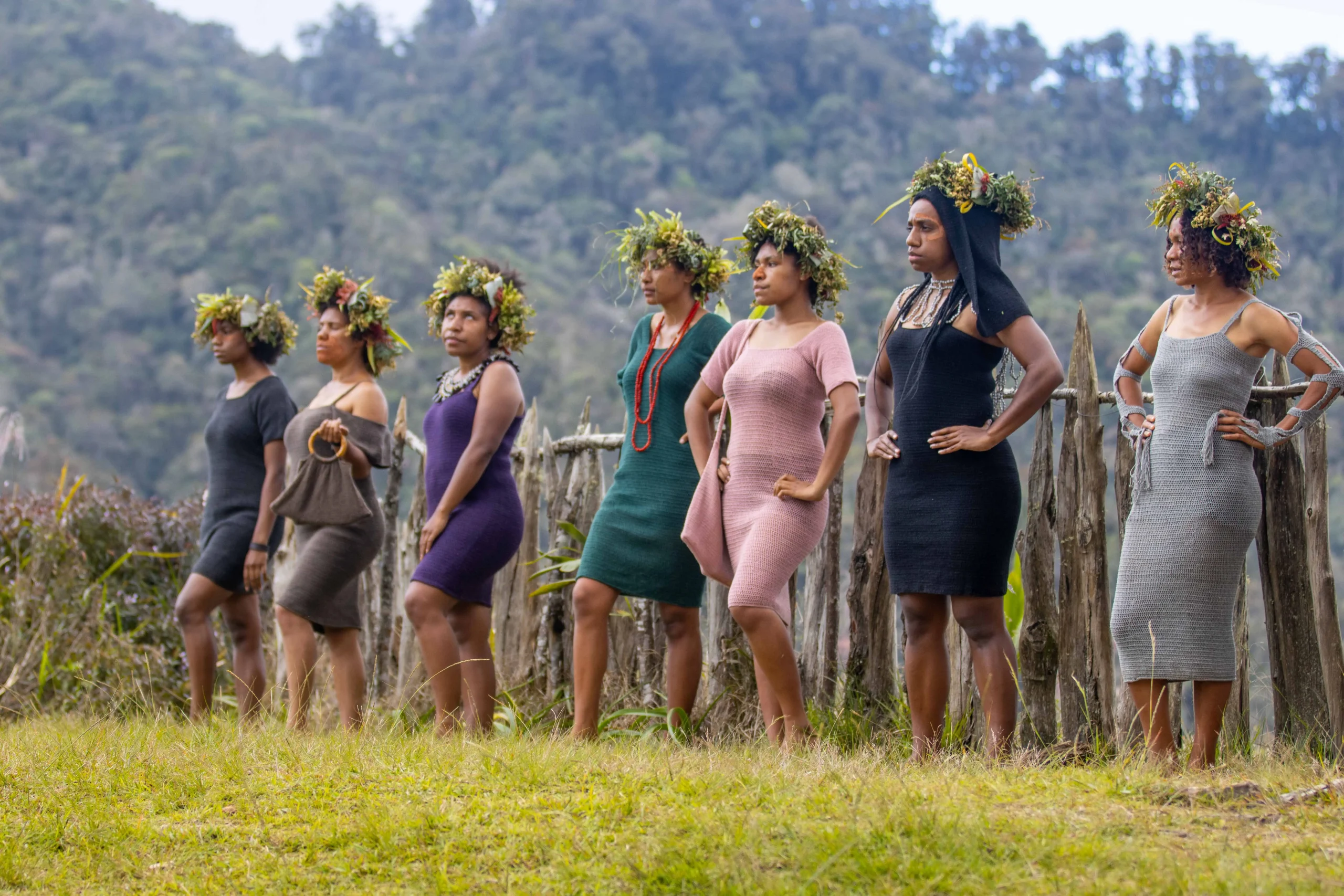
Florence also imparts workshops to Indigenous Women in remote communities so they can learn to make products they can then sell in various markets and strengthen the network of Indigenous Women. “The key is to know your clientele well in each market,” Florence states. “Even though the creation process is the same, the colors and designs you use for a high- or middle-class clientele are not the same as you use for a lower-class clientele, nor is what you would use in the rainy season the same as for the dry season, or for local markets, vintage markets, or international markets.”
Florence views the world as being too big to not be able to generate additional markets in which to expand, and believes Indigenous Women’s strength determines their success. “We women are fighters and survivors,” she declares. “Every time they have squashed us, we pick ourselves up, not only for ourselves, but also for our sisters, communities, and ancestors.”

